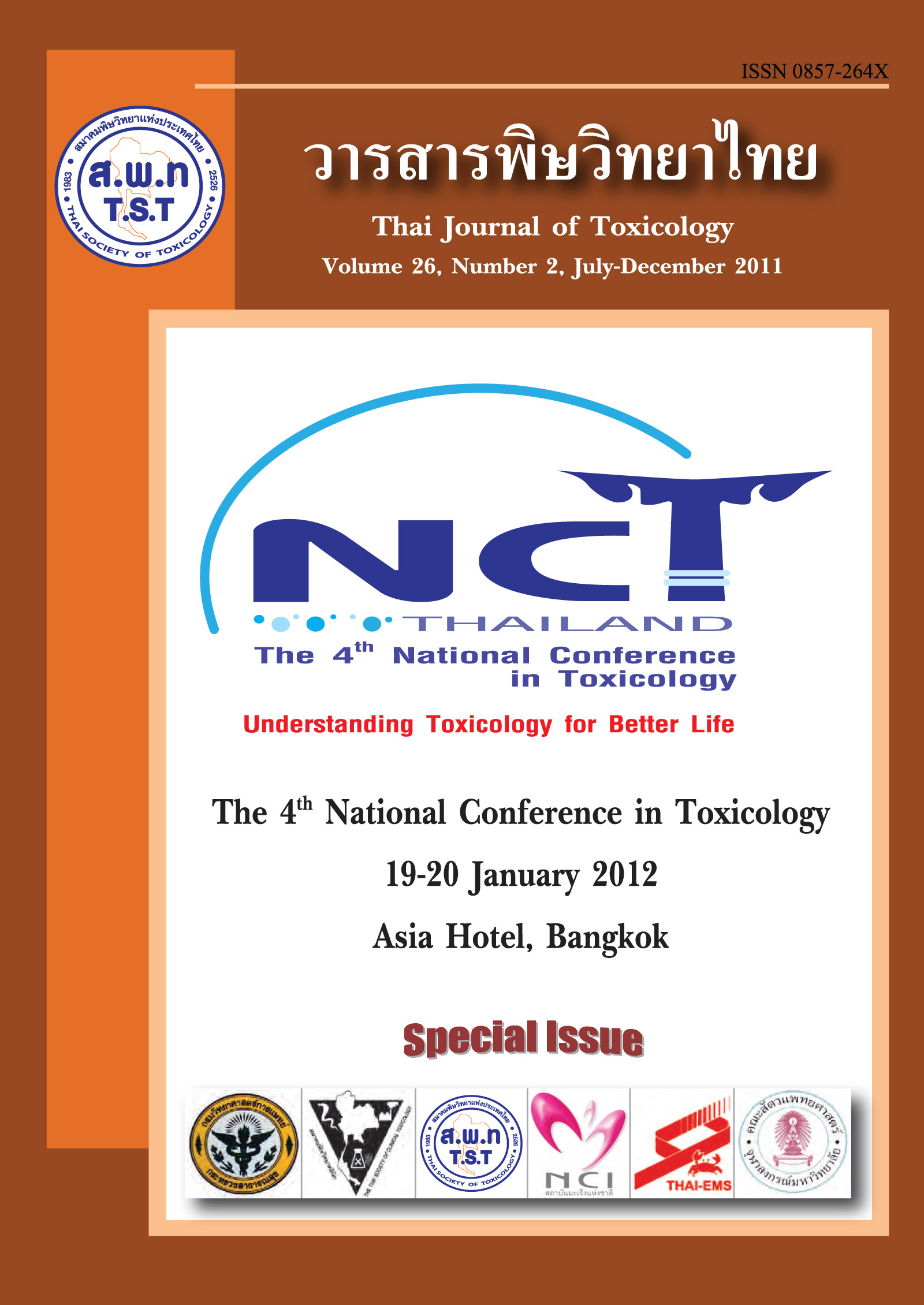Assessment on Heavy Metals Contamination and Health Risk of Contaminant Exposure from Consumptions of Fish in Loeng Puay Marsh at Khon Kaen Province
Main Article Content
Abstract
Drainage and run off from agriculture and waste water in the watershed is one pollution source for the heavy metal accumulation in the aquatic fishes which might lead to human health risk of heavy metal exposure from fish consumptions. This study aimed to examine the concentration of heavy metal contamination in fishes from Loeng Puay marsh at Khon Kaen Province and to assess the potential for contaminant-induced health risk from fish consumptions. Fish samples were collected by random sampling of Common Silver Barb (n=7) and Tilapia Nilotica (n=11). Heavy metal concentrations were analyzed by using Atomic Absorption Spectrophotometry (AAS), and health risk potentials of contaminant exposures were assessed. Results showed that the concentrations of lead were exceeded the Thai food contaminated standard of Public Health Ministry (1 mg/kg) in both Common Silver Barb and Tilapia Nilotica, which were 2.71 + 0.78 mg/kg and 2.11 + 1.13 mg/kg, respectively. The concentrations of copper, manganese and cadmium were lower than the standard. The results from risk estimation of lead exposure from the consumption, at least 0.284 kg/meal, 2 meals/day and 3 days/week of Common Silver Barb or Tilapia Nilotica were potential for adverse health effect, compared to the provisional tolerable weekly intake. It can be concluded that consumers have the potential health risk to lead exposure by consumptions of contaminated fishes from the overflow Loeng Puay marsh depending on eating quantity. Therefore, the polluted fish is one source that allows consumers to expose to lead and there should be further investigations of the health risk to lead exposure from variously relative sources of contaminated fishes.


